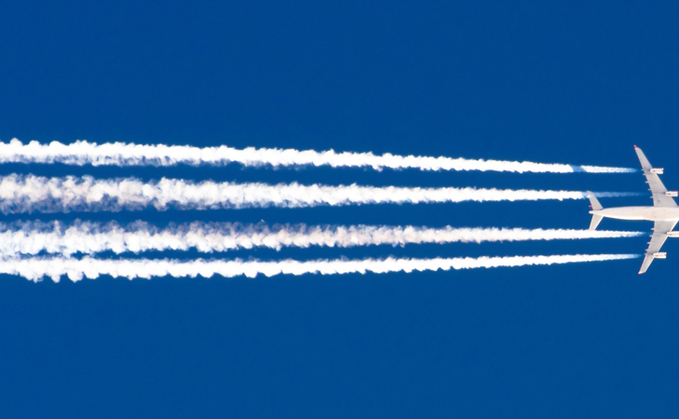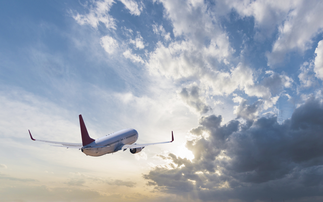Credit: iStock
New study by Transport & Environment suggests thousands of cases of high blood pressure, diabetes, and dementia could be linked to tiny particles emitted by planes
Fifty-two million people live within a 20 kilometre radius of the 32 busiest airports in Europe are facing exposure to ultrafine particles from planes, which are putting them at increased risk of serious health conditions such as respiratory problems, cardiovascular disease, and complications in pregnancy.
That is the alarming headline warning of a new report released yesterday by consultancy CE Delft, which was by the Transport & Environment (T&E) think tank.
While aviation emissions have been a persistent concern as a contributor to climate change, the new study sheds light on the adverse health effects of living near an airport.
The report calculates more than 10 per cent of Europe's total population lives within 20 kilometres of an airport. For example, in Paris eight million people are affected by its two main airports.
The research suggests that exposure to ultrafine particles (UFPs) from planes could be associated with 280,000 cases of high blood pressure, 330,000 cases of diabetes, and 18,000 cases of dementia across the continent.
The study extrapolates reported cases of these illnesses around Amsterdam Schiphol airport to give what its authors claim is the first ever estimate of health effects linked to aviation-related UFPs in Europe.
With a tiny size of 100 nanometers in diameter - around 1,000 times smaller than a human hair - the researchers warned UFPs are "particularly concerning" because they penetrate deeply into the human body and have been found in the blood, brain, and placenta.
According to the study there is presently no regulation on safe levels of UFPs in the air, despite the fact the World Health Organisation (WHO) warned it was a pollutant of "emerging concern" more than 15 years ago.
The study explained how UFPs from planes are emitted at a high altitude, but are also released during take-off and landing, meaning residents living near airports are particularly affected.
It estimated people living within a 5km radius of an airport breathe in air that contains, on average, anything from 3,000 to 10,000 ultrafine particles per cubic centimetre emitted by aircraft.
The report also showed that in many cities there is a correlation between people living near an airport and lower incomes, which it warned "shows once again that the most vulnerable in society are most affected by air pollution".
Jemima Hartshorn, founder of Mums for Lungs - a UK based air quality campaign group - warned "now we are becoming aware of another invisible danger affecting everyone's health".
"We know that air pollution is the biggest public health crisis and particularly affects children, babies and older people," she said. "Most people have no choice over where airports are sited or how big they are, and often this pollution is being created by planes carrying passengers from all around the world."
The study found using 'better quality' jet fuel can reduce UFPs by up to 70 per cent, with the amount of particles emitted from planes depending largely on the composition of the fuel. "The cleaner the aviation fuel, the less pollution it generates when burnt," it said.
Aircraft fuel can be cleaned through a process called hydrotreatment, the study explained. It has been used for decades to remove sulphur from fuels for cars and ships fuels and could cost less than five cents per litre of fuel for the aviation sector.
However, the report details how jet fuel standards for planes have never been improved, even though tighter standards could "significantly" reduce air pollution around airports.
Other measures cited by the report to reduce UFPs and improve overall air quality include reducing air traffic and taking steps to tackle aviation's continued growth, which is also posing a threat to international climate goals. In addition, it calls for the wider use of cleaner technologies, such as sustainable aviation fuels (SAFs) and zero-emission aircraft which release fewer pollutants.
"It's not often that an alarming problem affecting millions of people can be reduced, and at a low cost," said Carlos Lopez de la Osa, aviation technical manager at T&E. "Dirty fumes caused by planes can be drastically reduced if we clean up the fuel. The sector prides itself with cutting-edge technology and so-called efficient planes, yet continues to use fuels which have a devastating impact on the health of millions of Europeans. It's time for the EU to set jet fuel quality standards for the sake of the climate and people's health."
UFPs are a form of "non-CO2 emission from planes", a category which includes a range of pollutants, such as nitrogen oxides and sulphur dioxide.
Although these pollutants did not fall within the scope of the study, researchers warned they also have harmful health effects in addition to the ailments already associated with particulate pollution.
Moreover, these emissions have a significant climate impact, amplifying aviation's contribution to global warming to a level that is at least twice as bad as previously thought, according to the report.
The EU is in the process of developing new rules to try and tackle the environmental impact of non-CO2 emissions, including high altitude contrails that are known to make a significant contribution to climate change. But the European Commission has faced criticism over the plans in recent days after it emerged that it was considering exempting long haul flights from new reporting requirements.
Keep up to date with all the latest green business news by signing up to the free Daily and Weekly BusinessGreen Newsletters.








